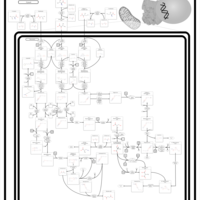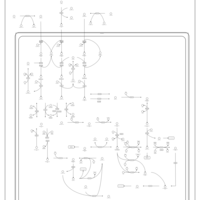| Valine, leucine and isoleucine degradation |    |
| Propanoate metabolism |    |
| Lysine degradation |    |
| Pyruvate metabolism |    |
| Steroid Biosynthesis |    |
| Fatty acid Metabolism |    |
| Ketone Body Metabolism |    |
| Butyrate Metabolism |    |
| Ibandronate Action Pathway |    |
| Simvastatin Action Pathway |    |
| Pravastatin Action Pathway |    |
| Rosuvastatin Action Pathway |    |
| Alendronate Action Pathway |    |
| Lovastatin Action Pathway |    |
| Zoledronate Action Pathway |    |
| Cerivastatin Action Pathway |    |
| Risedronate Action Pathway |    |
| Pamidronate Action Pathway |    |
| Fluvastatin Action Pathway |    |
| Atorvastatin Action Pathway |    |
| 2-Methyl-3-Hydroxybutryl CoA Dehydrogenase Deficiency |    |
| 3-Hydroxy-3-Methylglutaryl-CoA Lyase Deficiency |    |
| 3-Methylglutaconic Aciduria Type I |    |
| 3-Methylglutaconic Aciduria Type III |    |
| 3-Methylglutaconic Aciduria Type IV |    |
| Beta-Ketothiolase Deficiency |    |
| Ethylmalonic Encephalopathy |    |
| Glutaric Aciduria Type I |    |
| Glutaric Aciduria Type I |    |
| Leigh Syndrome |    |
| Malonic Aciduria |    |
| Maple Syrup Urine Disease |    |
| Methylmalonic Aciduria |    |
| Methylmalonic Aciduria Due to Cobalamin-Related Disorders |    |
| Hypercholesterolemia |    |
| Pyruvate Dehydrogenase Complex Deficiency |    |
| Short Chain Acyl CoA Dehydrogenase Deficiency (SCAD Deficiency) |    |
| Propionic Acidemia |    |
| 3-Methylcrotonyl Coa Carboxylase Deficiency Type I |    |
| Isovaleric Aciduria |    |
| Saccharopinuria/Hyperlysinemia II |    |
| Lysosomal Acid Lipase Deficiency (Wolman Disease) |    |
| Pyruvate Decarboxylase E1 Component Deficiency (PDHE1 Deficiency) |    |
| Methylmalonate Semialdehyde Dehydrogenase Deficiency |    |
| Desmosterolosis |    |
| CHILD Syndrome |    |
| Chondrodysplasia Punctata II, X Linked Dominant (CDPX2) |    |
| Smith-Lemli-Opitz Syndrome (SLOS) |    |
| Mitochondrial Beta-Oxidation of Short Chain Saturated Fatty Acids |    |
| Malonyl-coa decarboxylase deficiency |    |
| Cholesteryl ester storage disease |    |
| Hyper-IgD syndrome |    |
| Mevalonic aciduria |    |
| Wolman disease |    |
| 3-hydroxyisobutyric acid dehydrogenase deficiency |    |
| 3-hydroxyisobutyric aciduria |    |
| Isobutyryl-coa dehydrogenase deficiency |    |
| Isovaleric acidemia |    |
| Hyperlysinemia I, Familial |    |
| Hyperlysinemia II or Saccharopinuria |    |
| Carnitine palmitoyl transferase deficiency (I) |    |
| Long chain acyl-CoA dehydrogenase deficiency (LCAD) |    |
| Very-long-chain acyl coa dehydrogenase deficiency (VLCAD) |    |
| Carnitine palmitoyl transferase deficiency (II) |    |
| Medium chain acyl-coa dehydrogenase deficiency (MCAD) |    |
| Trifunctional protein deficiency |    |
| Primary hyperoxaluria II, PH2 |    |
| Pyruvate kinase deficiency |    |
| Short-chain 3-hydroxyacyl-CoA dehydrogenase deficiency (SCHAD) |    |
| Succinyl CoA: 3-ketoacid CoA transferase deficiency |    |
| Pyridoxine dependency with seizures |    |
| 2-aminoadipic 2-oxoadipic aciduria |    |